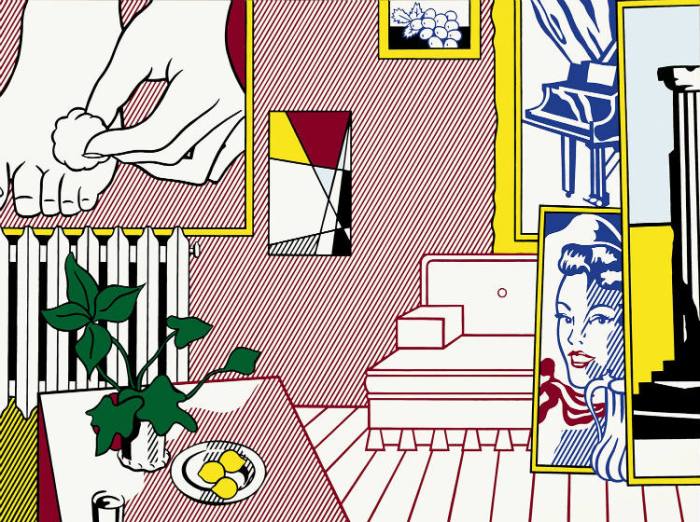
Roy Lichtenstein, “Artist’s Studio ‘Foot Medication,'” 1974. The Art Institute of Chicago, Gift of Edlis/Neeson Collection. © Estate of Roy Lichtenstein. Part of the ongoing exhibition The New Contemporary at the Art Institute of Chicago. Image courtesy the Art Institute of Chicago.
CHICAGO — What value is art to a society if it isn’t accessible to all sectors of a society?
Several years ago, with New York’s Museum of Modern Art taking the lead, museums in the United States jacked up their basic admission past the $20 threshold. (At MoMA, an adult ticket is now $23; seniors pay $16, unrealistic given their fixed incomes; students $12; and children 16 and under get in for free.) A notable exception is Fort Worth’s Amon Carter Museum of American Art, which, by decree of its newspaperman founder, who wanted future generations of children to have access he did not, is always free. At the Metropolitan Museum, officials cleverly hide that the visitor can pay what s/he wants (part of the museum’s mandate) by putting the information in small letters, with a suggested admission price ($25) much larger. And for advanced purchase on the ‘Net, the pay-as-you-like option does not exist. The alternative to these high single admission fees — that lets museums present an affordable option, at least for locals — is the annual all-access membership card. But here, not all offers are equal.
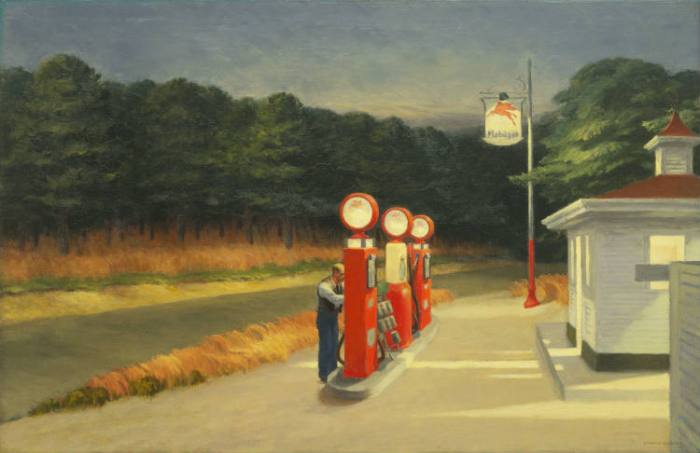
Edward Hopper. “Gas, 1940.” The Museum of Modern Art, New York, Mrs. Simon Guggenheim Fund, 1943. © The Museum of Modern Art/Licensed by SCALA / Art Resource, NY. From the exhibition America after the Fall: Painting in the 1930s, running at the Art Institute of Chicago through September 18. Image courtesy the Art Institute of Chicago.
Not only is MoMA’s individual annual rate almost the same as the Art Institute’s essentially dual rate — $85 versus $95 — but the former’s dual rate of $140 has an additional restriction the latter’s does not: The two users need to always be the same. At the Art Institute, the basic year membership of $95 includes admission for two adults, *only one of whom needs to be a card-holder*, and free admission for all children under 18. In other words, you can bring as many of your visiting single cousins from Texas and their broods of 10 children (not to mention your cousins from the South Side) with you as you want as long as it’s on different visits. And you can also bring them along to the members-only classes, workshops, and other events.

Charles Green Shaw, ” Wrigley’s, 1937,” from the exhibition America after the Fall: Painting in the 1930s, running at the Art Institute of Chicago through September 18. Restricted gift of the Alsdorf Foundation. The Art Institute of Chicago. Image courtesy the Art Institute of Chicago.
But what about the offer? See below (and above) for samples from some current and upcoming shows in the city which — from the generous member admission deal at its Art Institute, anyway — no longer seems to live down to native son Nelson Algren’s depiction of a “City on the Make,” mayor Rahm Emmanuel’s sweeping privatization of public services notwithstanding.
What the Art Institute is, however, is a museum in a museum-like setting, situated two blocks from the oceanic Lake Michigan in one direction and three from the old-school Chicago river, with its old-fashioned wood and wrought-iron bridges, in the other. Even the bathrooms, with their large rectangular art deco sinks, are fit for a museum.
— Paul Ben-Itzak
PS: As far as bargain-rate museum going, anyway, the City of Paris outdoes both New York and Chicago, with a Paris musées card that for 40 Euros (60 if you want to bring a guest of your choice, and 20 for those under 26 years old) provides access to 14 municipal museums, including the Modern Art Museum of the City of Paris, the Petit Palais, and the Musée de la Vie Romantique.
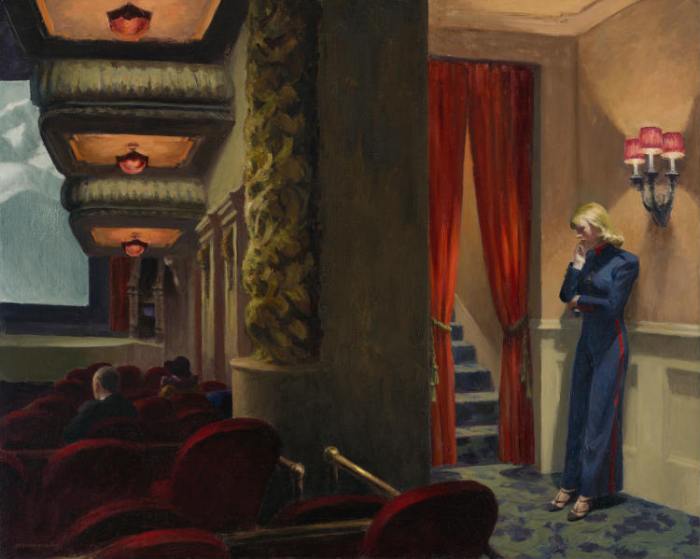
Edward Hopper. “New York Movie,” 1939. The Museum of Modern Art, New York. Given anonymously, 1941. From the exhibition America after the Fall: Painting in the 1930s, running at the Art Institute of Chicago through September 18. Courtesy the Art Institute of Chicago.
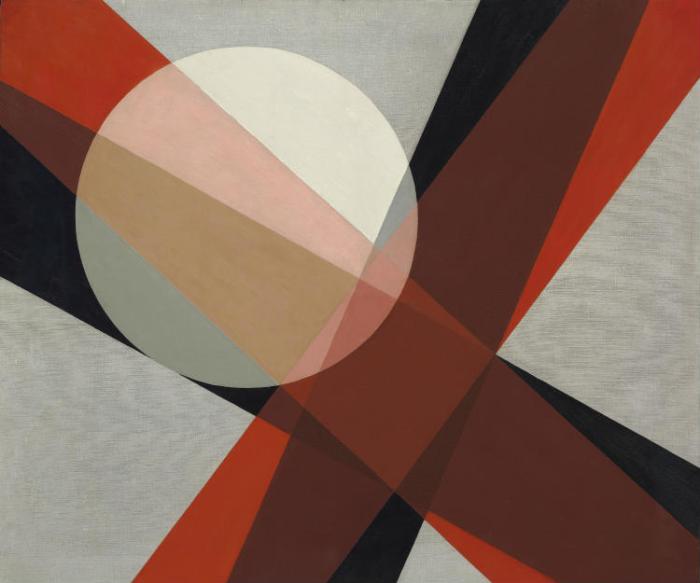
Running from October 2 through January 3, 2017 at the Art Institute of Chicago,
Moholy-Nagy: Future Present is the first retrospective in 50 years dedicated to the pioneering multi-media artist who, after teaching at Bauhaus in Germany from 1923 through 1928, in 1937 founded Chicago’s New Bauhaus school, today the Institute of Design at the Illinois Institute of Technology. Above: László Moholy-Nagy, “A 19,” 1927. Hattula Moholy-Nagy, Ann Arbor, Michigan. © 2016 Hattula Moholy-Nagy/VG Bild-Kunst, Bonn/Artists Rights Society (ARS), New York. Courtesy the Art Institute of Chicago.

László Moholy-Nagy, “Behind the Back of the Gods,” 1928. The Metropolitan Museum of Art, New York, Ford Motor Company Collection, Gift of Ford Motor Company and John C. Waddell, 1987, 1987.1100.23. © 2016 Hattula Moholy-Nagy/VG Bild-Kunst, Bonn/Artists Rights Society (ARS), New York. Courtesy the Art Institute of Chicago.
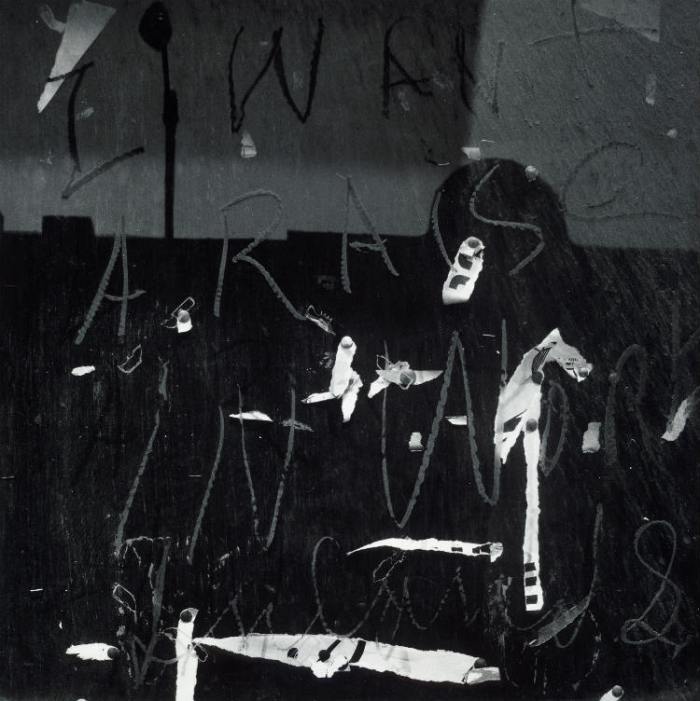
Featuring 100 photographs, and running through August 14 at the Art Institute of Chicago, the exhibition Aaron Siskind: Abstractions examines some of Siskind’s most influential abstract photographs and series, capturing what the artist referred to as “the drama of objects.” Above: Aaron Siskind, “Chicago 224 1953,” 1953. The Art Institute of Chicago, Gift of Noah Goldowsky. Image courtesy the Art Institute of Chicago.

Andy Warhol, “Little Race Riot,” 1964. The Art Institute of Chicago, Gift of Edlis/Neeson Collection. © 2015 The Andy Warhol Foundation for the Visual Arts, Inc./Artists Rights Society (ARS), New York. Part of the ongoing exhibition The New Contemporary at the Art Institute of Chicago. Image courtesy the Art Institute of Chicago.
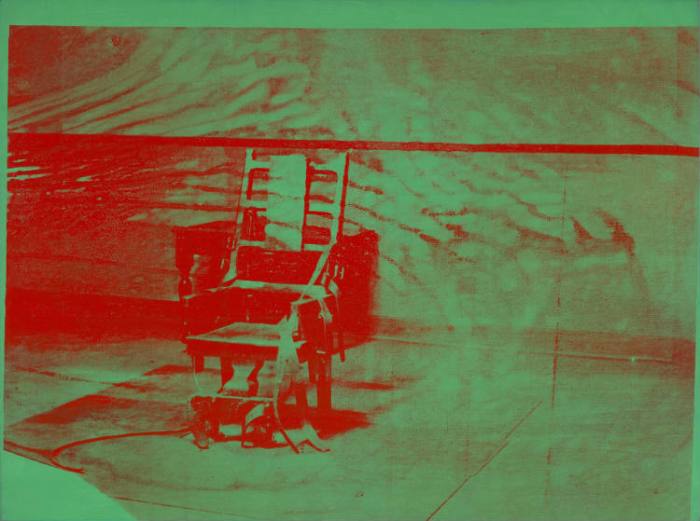
Andy Warhol, “Big Electric Chair,” 1967-68. The Art Institute of Chicago, Gift of Edlis/Neeson Collection. © 2015 The Andy Warhol Foundation for the Visual Arts, Inc./Artists Rights Society (ARS), New York. Part of the ongoing exhibition The New Contemporary at the Art Institute of Chicago. Courtesy the Art Institute of Chicago.
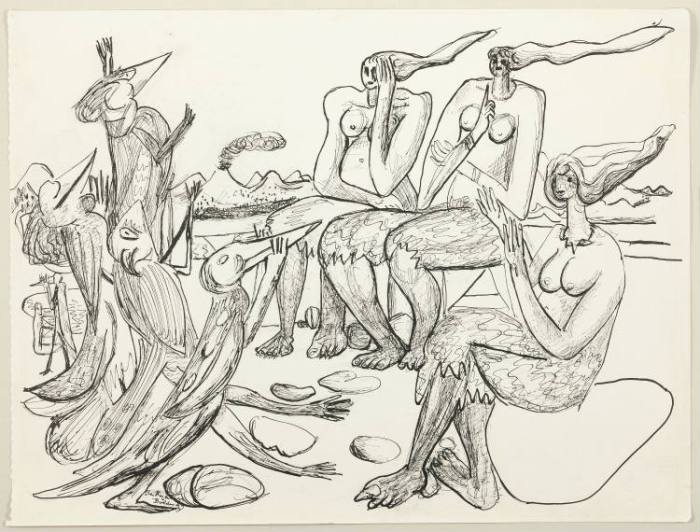
Max Beckmann, “Birdplay,”1949. The Art Institute of Chicago, Margaret Fisher Endowment Fund. Part of the exhibition Master Drawings Unveiled: 25 Years of Major Acquisitions, on view at the Art Institute of Chicago from August 27 through January 29, 2017. Image courtesy the Art Institute of Chicago.

Unidentified artist, “Genealogical Tree of the Mercedarian Order,” mid-18th century. Carl and Marilynn Thoma Collection. Part of the exhibition From Doctrine and Devotion: Art of the Religious Orders in the Spanish Andes, running through June 25, 2017 at the Art Institute of Chicago. Image courtesy the Art Institute of Chicago.


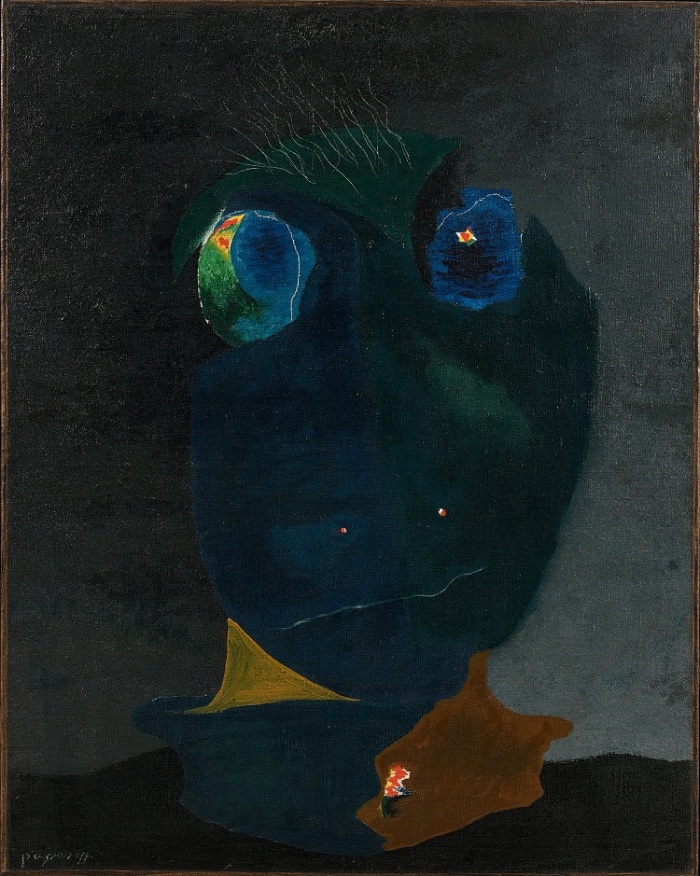 Georges Papazoff (1894-1972), “Tete,” circa 1928. Oil on canvas, 92 x 73 cm (36 1/4 x 28 3/4 inches). Signed at lower left. Pre-dates by 17 years Duchamp’s intergallactic View cover. Artcurial pre-sale estimate 20,000 – 30,000 Euros. Image copyright and courtesy Artcurial.
Georges Papazoff (1894-1972), “Tete,” circa 1928. Oil on canvas, 92 x 73 cm (36 1/4 x 28 3/4 inches). Signed at lower left. Pre-dates by 17 years Duchamp’s intergallactic View cover. Artcurial pre-sale estimate 20,000 – 30,000 Euros. Image copyright and courtesy Artcurial.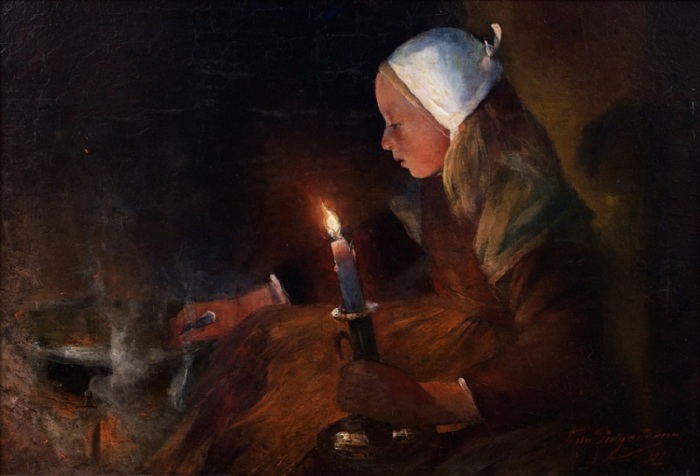 Ferdinand du Puigaudeau (1864-1930), “Jeune fille à la bougie,” 1891. Oil on thin cardboard laid down on canvas, 50 x 72 cm (19 3/4 x 28 3/8 inches). Signed and dated lower right. Du Puigaudeau landscapes available in this auction are also breathtaking. Artcurial pre-sale estimate: 20,000 – 30,000 Euros. Image copyright and courtesy Artcurial.
Ferdinand du Puigaudeau (1864-1930), “Jeune fille à la bougie,” 1891. Oil on thin cardboard laid down on canvas, 50 x 72 cm (19 3/4 x 28 3/8 inches). Signed and dated lower right. Du Puigaudeau landscapes available in this auction are also breathtaking. Artcurial pre-sale estimate: 20,000 – 30,000 Euros. Image copyright and courtesy Artcurial.









